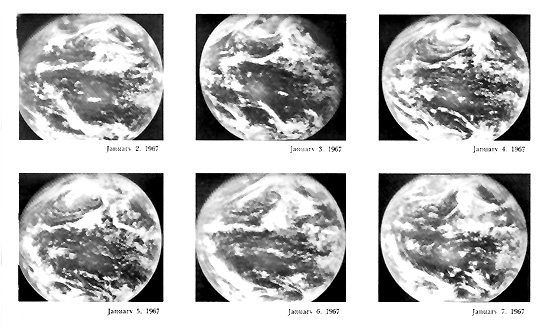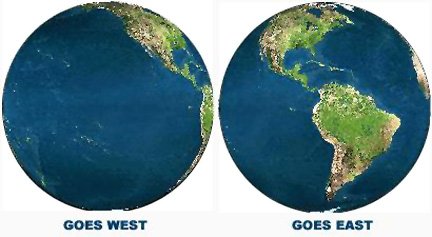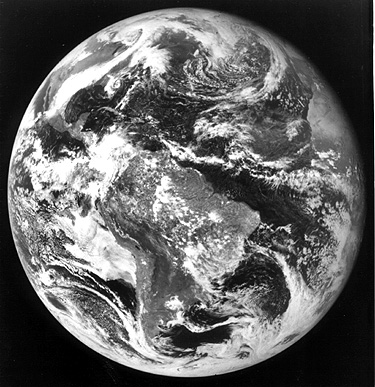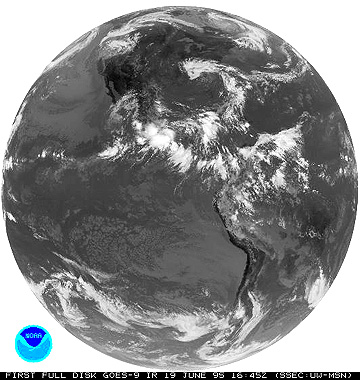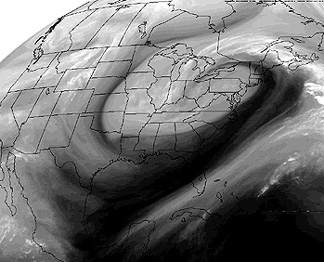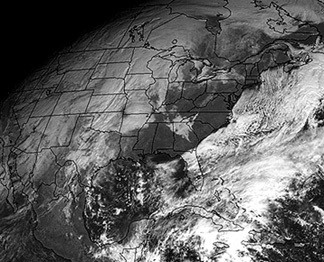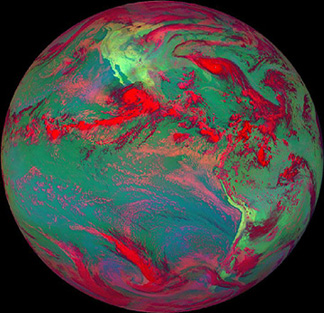Geostationary Satellites¶
The various geostationary satellites from several countries, either now functioning or having become non-operating, provide synoptic views of about one-fourth of the Earth�s surface. The part (it remains the same) they cover depends on where they are located relative to a point along (close to) the equator. By completing their orbit once every 24 hrs, they stay fixed relative to Earth�s equatorial rotation and thus are “stationary” in space. This page concentrates on the U.S.�s GOES series but similar satellites from other nations� space programs are discussed. Thus, in today�s world, mankind has an excellent network of satellites monitoring the Earth�s weather systems.
Geostationary Satellites¶
` <>`__14-16: Comment on at least one mega-weather pattern in the northern and in the southern hemispheres as time progresses from January 2 through the 7th. **ANSWER**
` <>`__14-17: Is that a hurricane at about 1:00 o’clock in the hemisphere, off the Spanish coast? **ANSWER** ****
GOES-1 arrived in a geostationary orbit at 135° W, soon after its launch on October 16, 1975. Others launched at two to three year intervals (coincidentally, GOES-10 entered its orbit on April 25, 1997, the same day the author wrote this paragraph). We refer to the satellites covering the Atlantic Ocean and the eastern U.S. as GOES-East (located above the equator at 75°W longitude), and those over the Pacific as GOES-West (at 135°W longitude). Together, they provide coverage of both the Atlantic and Pacific, as shown in this drawing which also illustrates the full disk nature of the view:
To cover the entire Earth, four GOES would be needed. However, other parts of the world are monitored by other systems (see next page). As of mid-2000, GOES-8 and GOES-10 are operating, with GOES-9 and GOES-11 also in orbit but in storage until one or both of the first two fails.
Again, VISSR is the chief sensor, but sounding (VAS is the VISSR Atmospheric Sounder) capabilities are also onboard. Starting with GOES-8 (April 13, 1994), the VISSR operates all of the time, rather than providing periodic views. To exemplify GOES imagery, we now show the first visible image (top) from GOES-1 on October 26, 1975 and the first test IR image (bottom) from GOES-9 on June 19, 1995:
` <>`__14-18: The March 20th storm shown in the upper of the two images just above resulted in a huge snowfall over its northern segment. The cloud pattern resembles a hurricane but there are differences. Mention several of these.` <Sect14_answers.html#14-18>`__**ANSWER**
Unusual color composites can be made from different channel images. On the top (or left) is a colorized rendition of the 6.7 µm channel image from GOES-8, which is sensitive to water vapor distribution, highlighting a big U.S. storm on March 20, 1994. On the bottom (or right) is a false color image made from Channel 6.7 µm = blue; 11 µm = green; Visible = red. This GOES image displays Hurricane Hugo, as seen on September 21, 1989.
Primary Author: Nicholas M. Short, Sr. email: nmshort@nationi.net
